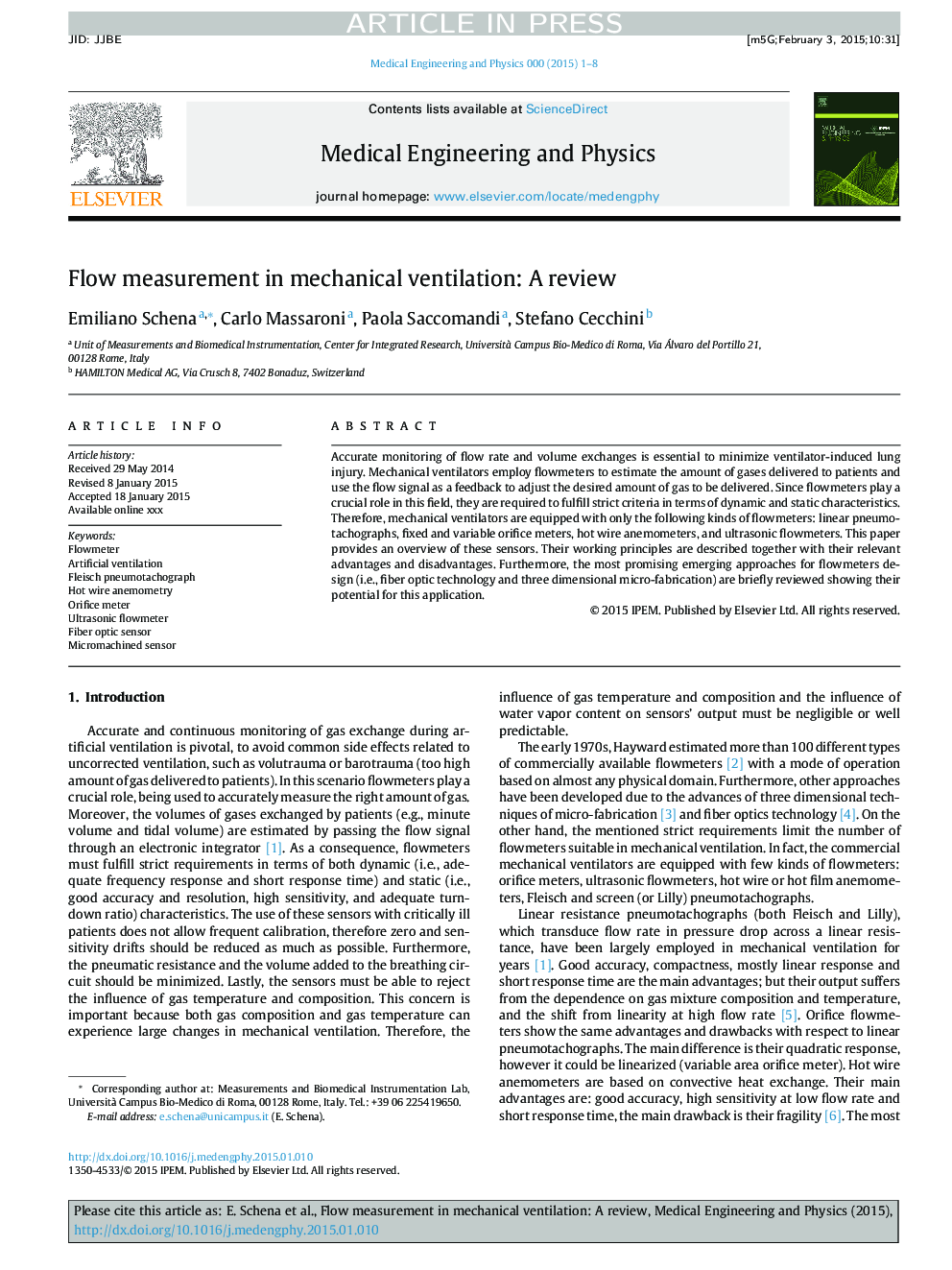| Article ID | Journal | Published Year | Pages | File Type |
|---|---|---|---|---|
| 10435042 | Medical Engineering & Physics | 2015 | 8 Pages |
Abstract
Accurate monitoring of flow rate and volume exchanges is essential to minimize ventilator-induced lung injury. Mechanical ventilators employ flowmeters to estimate the amount of gases delivered to patients and use the flow signal as a feedback to adjust the desired amount of gas to be delivered. Since flowmeters play a crucial role in this field, they are required to fulfill strict criteria in terms of dynamic and static characteristics. Therefore, mechanical ventilators are equipped with only the following kinds of flowmeters: linear pneumotachographs, fixed and variable orifice meters, hot wire anemometers, and ultrasonic flowmeters. This paper provides an overview of these sensors. Their working principles are described together with their relevant advantages and disadvantages. Furthermore, the most promising emerging approaches for flowmeters design (i.e., fiber optic technology and three dimensional micro-fabrication) are briefly reviewed showing their potential for this application.
Keywords
Related Topics
Physical Sciences and Engineering
Engineering
Biomedical Engineering
Authors
Emiliano Schena, Carlo Massaroni, Paola Saccomandi, Stefano Cecchini,
